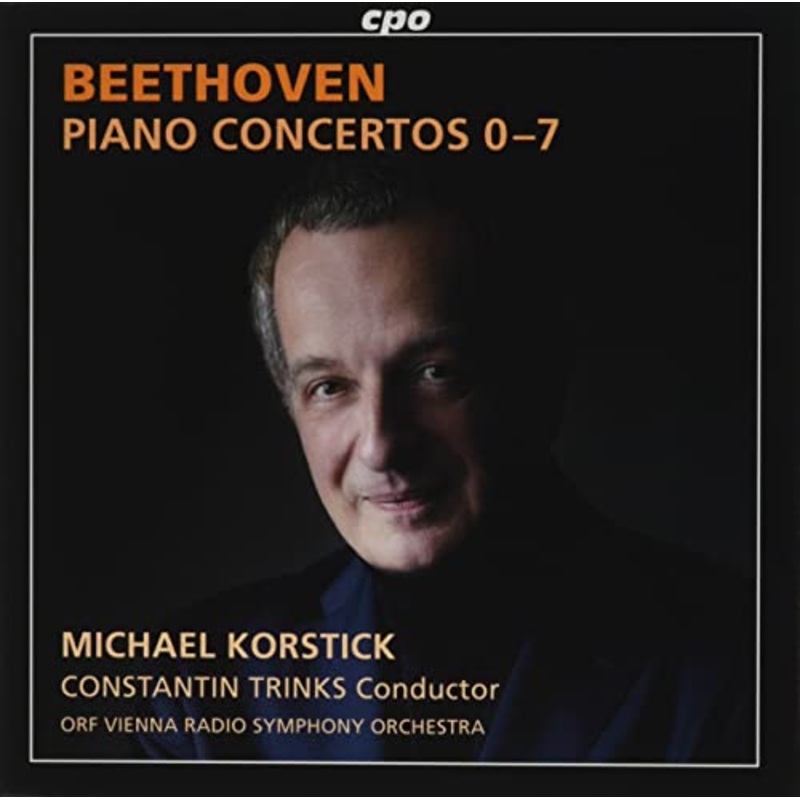
Credits:
Andr Schue
Description:
German pianist Michael Korstic recorded the complete Beethoven piano sonatas for the OEHMS label between 1998 and 2007 to great acclaim. On the occasion of the 250th anniversary of Beethoven's birth, he is now fully committed to a set of the complete piano concertos. Beethoven's piano concertos are usually grouped together as a complete set from No. 1 to No. 5, but this complete set by Korstick includes the Rondo in B-flat major WoO 6, the finale of the first draft of No. 2, the piano version of the Violin Concerto (referred to as No. 7 on this CD), and the D major Concerto in D major, which Beethoven is believed to have composed around 1814-15. In addition to the piano version of the violin concerto (No. 7 on this CD) and the D major concerto section (No. 6 on this CD), which Beethoven is said to have composed around 1814-15, the CD also includes the E-flat major concerto that he composed when he was around 14 years old. The "No. 0" in E-flat major WoO 4, written by a young composer, has lost its orchestral part and only the piano part is transmitted. An example of orchestration of this piece is that by Swiss composer Willi Hess, but here, at Korstic's suggestion, a new orchestration was commissioned from conductor and musicologist Hermann Dechant. Two bassoons, which were not in Hess's version, were added with reference to No. 4. In the last movement, two trumpets and timpani were added, resulting in a magnificent sounding concerto with a performance time of approximately 26 minutes. The cadenza is based on Dechant's version with some modifications by Korstic.H15 in D major, with 258 bars, is the largest of Beethoven's sections, and was completed in 1986 by the English musicologist Nicholas Cook as a stand-alone movement, using other sketches as reference. Hermann Dechant added a cadenza and coda to Cook's version, and Korstic made his own modifications to the score (duration 13'57"). In Nos. 1 through 5, which should be considered the main focus of the program, both piano and orchestra adopt period style and use pedals and vibrato sparingly, while still maintaining the appeal of the symphonic sound typical of modern instruments. The fast movement develops dramatically at a tight tempo, while the slow movement sings the melody softly with a soft sound. Naxos Japan
